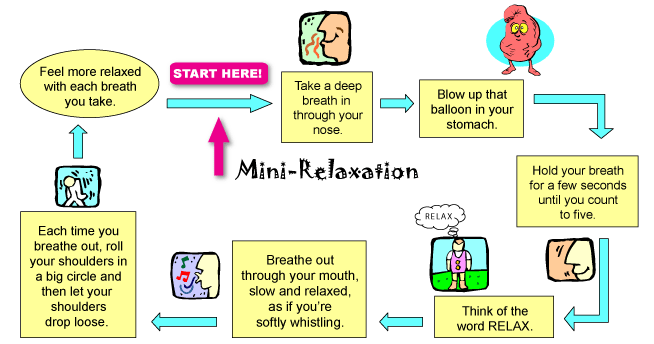

Pain & Tension - Dealing with Tension Using Relaxation
This chapter discusses the science (and art) of relaxation. The goal of this chapter is
to teach you ways of recognizing when you feel tense in your mind or body, and how
to reduce tension using relaxation exercises. It also discusses the following topics:
• Different relaxation methods including progressive muscle relaxation, belly
breathing, and imagery
• Where, when, and how to relax
• Videos and audio tracks in this chapter may help guide you with relaxation
steps

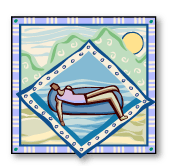
Goals

Learn


About how to reduce tension using relaxation methods
How to relax
The exercises, listen to audio tracks, and watch the video clips for this chapter
Read
Do

Goal
Be able to relax anytime anywhere
PACE - Picking a Problem
-
Introduction
It is time to do some detective work and pick a problem that you would like to work on. This is the first step of PACE!
The information in this section fits most situations, but what you are going through may be different. If the doctor or nurse tells you to do something else, please follow what they say.


I don’t have time to relax with my busy life






I can’t see how I can just relax when the phone is always ringing and the kids are running around!
When I feel pain, I can’t help but think that something bad will happen to me, then I really start to tense up
Even though I do some relaxation exercises in the morning, I often still feel tense by the afternoon. I don’t think relaxation exercises work for me
When I feel pain I get tense, and when I get tense, my pain level just escalates. How can I stop this cycle?
It is difficult for me to relax when I am feeling pain
-
Why is relaxation so important?
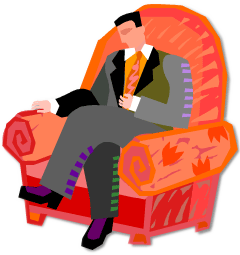
Using relaxation exercises can be one effective way of closing pain gates.
The goal of learning how to relax is to be able to do it when and where you
need it. The more you practice it at different times and in different places,
the better you will get at it.Look at the following suggestions that could also help you when you are
trying to relax. -
Being realistic in your expectations
As with any new skill that we learn, it will take time to get better at relaxing in different circumstances. You might never get as relaxed as you would like to be, but if you can just take the edge off your tension, it will help you manage your pain.
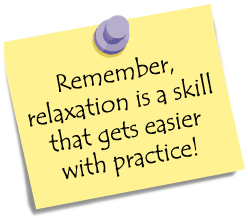
-
Relaxation suggestions
1. Early Intervention
Don’t wait until your pain level is high or until you are feeling tense or upset before trying to relax. Relaxation is much more effective when is used as a preventative measure before you first start to feel the tension and pain rising
2. Be ready to relax anytime, anywhere!
Even when you do your relaxation exercises in the morning, you may get tense in the afternoon. If you are having a stressful day, you may need to use your relaxation techniques many times that day. On the other hand, if you are having a relaxing day anyway, you may not need to use your techniques at all that day. It is important to be flexible in the way that you use relaxation.
3. Develop your own ‘Tension Meter’
Notice when tension rises:
• When you are driving, or during a stressful situation
• Keep track of how tense you are from time to time
For example, when you are waiting at a traffic light, check for signs of tension. You may
notice things like:• A clenched jaw
• Tight neck muscles
• The white of your knuckles (when holding the steering wheel)
It doesn’t matter if you can’t ‘switch off’ the tension. Letting go of the tension is the important thing. It is important for you to use muscle tension as a cue to relax your body. The key idea here is that you have the power to change the way you feel!
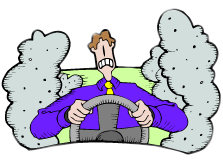
-
Your own time

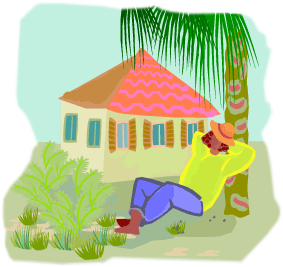
Tension can accumulate without even noticing it. Sometimes people become tense because of their way of life. Some people may feel that:
• If they don’t work now, it will never get done
• They just don’t have time for anything other than going to work, cleaning the house, and driving the kids to their many activities, etc
It’s often hard for those people to picture themselves in a relaxed state because they feel overwhelmed by their huge-to-do list.
Part of dealing with tension is taking time to relax. A great way of
doing this is by:• Practicing relaxation methods
• Making time for yourself
The next few pages will give you some tips on ways to make time
for yourself. These can help battle tension in the long run.Take your lunch breaks
When you are at work, it is important to take a 15 minute break
in the morning and another in the afternoon. It is also important to
take your lunch break. It’s best to take those breaks away from
your work area (if possible).For example, if you are working in an office, try not to spend your
break checking your emails at your computer. It might be a good
idea to each lunch in the cafeteria, spend your break walking
around, getting a glass of water, take a breath of fresh air, etc.Use up your vacation time
It is important to take vacations. Unfortunately, many people do not use up all of their vacation time, mostly because they feel there is too much to do and not enough time to do it all. Whatever the reason, the result generally leads to an accumulation of stress, anxiety, and tension.
It’s important to note that when you are on vacation, it’s essential that you disconnect from your work, that is: not bringing work with you on vacation, not taking work-related calls and not checking phone messages or emails.

-
Myths and Facts
There are many common thoughts on relaxation and it is not easy to know which ones are true and which ones are false. You may have heard certain things about relaxation or you could have made your own observations about it.
Click on the icon below to see a list of myths and facts about relaxation. You might be surprised about certain answers. It helps to look at the explanation box to see why that common thought turned out to be either true or false...

-
Statistics
Did you know?
Chronic pain patients, after 10 weeks or mediation, had less pain, used less pain medication, had less mood swings, and could be more active
Most Canadians think that there is always too much to do and not enough time to do it
In a recent study, 77% of people with high levels of stress were able to cool down, lower their blood pressure and cholesterol levels, simply by training themselves to stay calm
Over a 5-year period, people who meditated had 50% less visits to the doctor’s office and 50% less hospital admissions
A study shows that all patients with Fibromyalgia who meditated for 10 weeks improved
Studies show that with 10 weeks of meditation, 2/3’s of chronic pain patients had a 30% reduction in pain, and half had more than a 50% reduction
Canada is third on the list of holiday-deprived countries. Canadian workers take an average of 19 vacation days per year
75% of long –term insomniacs, trained in relaxation and medication can fall asleep within 20 minutes of going to bed
-
Example
Robert picks a problem to work on
When I am in pain I can’t help but feel tense and when I feel tense, my pain
gets much worse. I don’t know how to stop this cycle!

-
Worksheet
Start thinking of the problem you would like to work on. Click on the icon below to access the worksheet for this section. Note: All the worksheets, checklists, diaries, and pain scales inserted in the chapters are for use only. If you would like advice or want to show these to a health professional, please feel free to bring a copy to your next appointment at the Pain Clinic.

PACE - Acting Upon the Problem
-
Introduction

Now that you have clarified what concerns you most, it’s time to decide what to do. Ready... set... action! In this section, the 2nd section of PACE, we will look at how to deal with tension by using relaxation.

-
Basic guidelines to relaxation
Now that you have clarified what concerns you most, it’s time to decide what to do. Ready... set... action! In this section, the 2nd section of PACE, we will look at relaxation methods you can apply in your everyday life to help battle tension.
A few basic guidelines to relaxation:
1. Choose the technique that suits you best
2. Practice at least twice a day – 4 to 6 times a day is ideal. REMEMBER THAT YOU CAN DO A BREATHING EXERCISE IN LESS THAN TWO MINUTES!
3. Set times that are yours for relaxation. DEFEND THEM!
4. When you practice at home, find a place that is warm, quiet, and comfortable. Take the phone off the hook, loosen any tight clothing, and settle down (eventually you will be able to relax anywhere).
5. Don’t expect immediate results
RELAXATION IS A SKILL THAT IS NOT LEARNED OVERNIGHT!
Don’t expect immediate results! -
Deep muscle relaxation
Take a look at the following diagram as it illustrates the vicious cycle of chronic pain, stress, and tension. This cycle needs to be broken to improve quality of life.
When you have chronic pain it often leads to stress which leads to tension in your muscles (especially in the muscles at the back of your neck, head, and your shoulders). This can lead to even more pain.After a while people can start to be tense all of the time because of pain and they can forget the difference between tense and relaxed muscles. Deep muscle relaxation can help you identify when muscles are tense and when they are relaxed. Eventually you will be able to recognize tension in your muscles and relax these muscles without getting caught in this vicious cycle.
Click on the icon to access our Quick Muscle Relaxation Exercise.

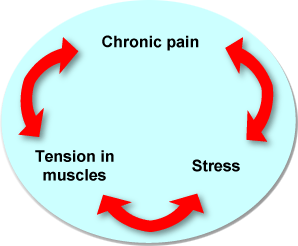
-
Imagery
You can learn to relax using distraction and your imagination. You can do this by using the following technique.
• Close your eyes
• Think of a place where you feel happy, calm, or relaxed
• Imagine that you are doing something that you really like. Think of all the things you can see in that place, what you feel and what you are doing
• Take long, slow breaths, and think or relaxing your arms and your hands. Allow your arms and hands to loosen and relax more and more
• Using your imagination, try to smooth out and calm the muscles in your arms
• Think of the muscles in your neck and face. Now let them become loose and heavy
• Calmly breathe in deep breaths and let the air out slowly
• Now try to relax your forehead and your jaw. Let your muscles in your head and face become loose, relaxed, heavy , and calm
• Think of the place where you feel happy again. Imagine that you are completely relaxed. Enjoy this feeling
• Now, think of your chest muscles and relax them. Breathe in calmly through your nose and let it out slowly through your mouth
• Relax your stomach muscles. Don’t forget to breathe deep breaths
• Now relax your legs. Allow your legs to sink into the chair, couch, or bed you are on
• Feel your leg muscles loosen up and relax
• Let all your muscles become calm and peaceful
• Imagine the warm peaceful feeling of relaxation slowly moving through your body as you are breathing long, slow breaths
• Enjoy the calm relaxed feeling for a few minutes. Slowly count backwards from 5 (five, four, three, two, one) then open your eyes. You can stretch if you want. Now you should feel relaxed
Imagine that there is butterfly sitting on your chest... it has its wings spread and it is
preparing to take flight... it seems more and more likely to do so every time you breathe in
and out... but it remains sitting on your chest for some time... look at this imaginary
butterfly carefully... look at its color and shape... soon the butterfly will take flight... imagine following the butterfly to a pleasant place. A place where you feel relaxed, comfortable and safe... pay careful attention to the sights and sounds, smells, and sensations of this place... how it feels and how you feel being there... allow yourself to enjoy being there and to relax
as fully as possible... you may only have 1 minute to enjoy this place but it is all the time
you need... remember that you carry this peaceful place inside you and you can visit this
one any time you wish.
-
Mini-relaxation
-
Belly breathing for relaxation
Belly breathing is a relaxation technique that is simple and easy to use
• It can be done at any time and in any place
• This type of relaxation works best when it is done several times a day
• It can be very helpful in changing the effects of stress
In stressful situations breathing speeds up. But when using the belly breathing technique, the breathing rate can be brought under control and it can also even prevent the stress response from happening.
Click on the icon to learn how to do Diaphragmatic Breathing

-
Example
Robert takes action
I read about relaxation through the PAIN 101 program and I have learned
different methods on how to relax. As soon as I feel tense, I now make a
point of breathing slower and taking some time to relax. Not long after I do
that, I notice that my tension levels have dropped and when that happens,
my headaches are nowhere near as bad as they were. I am also keeping
tracking of my relaxation in my diary and this is really helping.

-
Worksheet
Now that you have read the Acting upon your problem section, start thinking of ways that you may be able to solve the problem you picked in the last section.
Click on the book icon below to access the worksheets for this section. Note: All the worksheets, checklists, diaries, and pain scales inserted in the chapters are for use only. If you would like advice or want to show these to a health professional, please feel free to bring a copy to your next appointment at the Pain Clinic.

PACE - Challenges You May Face
-
Introduction
Even with the greatest plans we can sometimes come across obstacles. Before moving on with a plan, it is important to look at some of the challenges you may be facing. This brings us to the 3rd section of PACE.
The next pages describe some common doubts that other people with chronic pain have shared with us in regards to pain, tension, and relaxation.

-
I'm too busy to relax!
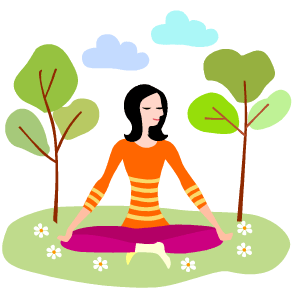
It may seem like there is no time for you to relax, but it really
doesn’t need to take a long time.Remember that the more you practice your relaxation exercises,
the easier it will get and the less time it will take to get in a relaxed
state. -
Relaxation methods don't work for me!
Relaxation methods don't work for me!
If you practice relaxation exercises in the morning and by the afternoon you feel tense again, this doesn’t mean that the relaxation exercises don’t work; it may be that you need to do it more often.
I can’t relax when I’m in pain
Many people who suffer with chronic pain say that their pain sensation makes them tense and then that tension just makes their pain even worse. This vicious cycle can be broken! The best way to fight tension is by recognizing the signs at the very beginning. When you first notice signs of tension or pain, you should immediately start practicing your relaxation exercises. Don’t wait for your tension to escalate to star your relaxation exercises.
-
Example
Challenges Robert faced with his plan
I don’t always find it convenient to do relaxation exercises. Most of the
tension I feel is at work and while I drive in rush hour traffic. I can’t see
myself using relaxation methods during a meeting at work, or even trying to
imagine myself on the beach while I’m on the road.Robert gets more help
I talked to my coach about my difficulty in practicing relaxation exercises at
work and while I am driving in the rush hour traffic. I explained that I just
don’t see how I could make that happen. My coach told me that people feel
the effects of the relaxation exercises much more when they do them as
soon as they start feeling tense; for example, taking deep breaths before
driving in rush hour traffic. My coach also told me that the more I practice
at home the easier it will be to apply those exercises in my everyday tasks. Even when I am driving in rush hour traffic!



-
Worksheets
Click on the book icon below to access the worksheet for this section. Remember, all the worksheets, checklists, diaries, and pain scales inserted in the chapters are for use only. If you would like advice or want to show these to a health professional, please feel free to bring a copy to your next appointment at the Pain Clinic.
For some challenges in your life you may need to call for help. You can click on the phone icon at the bottom left of the website to access help phone numbers.

PACE - Evaluating Your Plan
-
How did your plan work?
This brings us to the final step of PACE, Evaluating Your Plan.
Just like using a scale, weigh out how successful the plan was in dealing with the problem you chose to work on.
Reading about chronic pain and doing the activities required in this chapter may have brought up some concerns that you have in your life.
• Look at the concerns you identified
• Did your plan work?
• Do you see some improvement?
• Look at the things that did work
Try not to fix everything all at once. Depending on the problem, some things may take longer to work on than others.
Click on the video to learn more about evaluating you plan.


-
How will you know if you need to modify your plan?
Try for a week or two and track how well your plan is working. At the end of every day write down what is working and what isn’t.
Reward yourself for progress as often as you can. Remember that changing behaviours, especially when you are in pain and feeling tired and stressed can be hard. If you persist, you will see rewards!
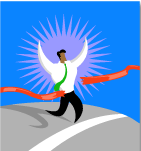
-
Different ways of keeping up with your plan in your everyday life

Asking your support network, like your friends and family, to help motivate
you with your plan is an excellent idea. -
Example

Robert evaluate his plan
I think that talking to my coach was very good idea, because it was quite
helpful. I am practicing the relaxation exercises more and more at home and
I now find it easier to relax in other situations.
-
Worksheet
Click on the book icon below to access the worksheet for this section. Remember, all the worksheets, checklists, diaries, and pain scales inserted in the chapters are for use only. If you would like advice or want to show these to a health professional, please feel free to bring a copy to your next appointment at the Pain Clinic.

-
Example 2

How Robert will stay on track
I plan on keeping up with my plan by doing relaxation exercises everyday and
every time that I start feeling tense. I plan on incorporating these exercises at
work. The best way for me to stay on track is to make it part of my daily
routine. Every morning I first take a shower, get dressed, and then I take
some time to do some diaphragmatic breathing. Relaxing is now just part of
my everyday routine!
-
Worksheet

Checklist
The purpose of the chapter checklist is to give you the opportunity to express any additional concerns you might have that may not have been covered in the chapter reading material or worksheets.
The checklists are for your use only; however, should you feel the need to discuss any of your responses, please bring a copy to your next Pain Clinic appointment.
If you are experiencing a high amount of distress, please click on the help phone icon on the bottom left of the website.
Relaxation Diary
The relaxation diary is intended to help you with your relaxation goals and exercises. Again, it is for your use only; however, should you feel the need to discuss any of your responses, please bring a copy to your next Pain Clinic appointment.
Click on the icon to the right to access the relaxation diary.
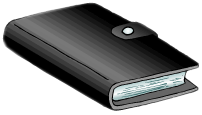
Resources
If you are interested in learning more, please consult the following references. If you need help finding any of these resources you can ask any member of your team.
Check out the websites below for more information on the following subjects:
Mediation
• www.anandaportland.org/Meditation_Research.htm
• www.mum.edu/compro/research.html
Laughter Therapy
• www.ottawaplus.ca/feature/health_beauty_and_wellbeing/12476/laughter_therapy.jsp

Conclusion
Congratulations! You have completed the Pain & Tension chapter.
By finishing this chapter and completing all the worksheets you have learned
many skills. We hope that you have solved your problem using PACE and have
learned many new ways to tackle problems that you may have in the future.
You have put in a lot of work in this chapter so give yourself a pat on the back.
Clicking the Next button will bring you to the table of contents for the next chapter about ‘Pacing’, or you can go to a different chapter by choosing from the menu on the left.
Introduction
Goals
P - Picking a Problem
A - Acting Upon the Problem
C - Challenges You May Face
E - Evaluating Your Plan
Checklist
Relaxation Diary
Resources
Conclusion
Glossary
PAIN & TENSION
